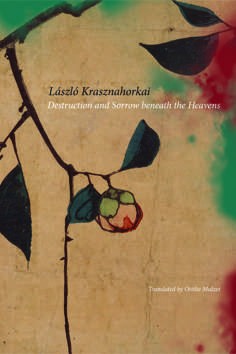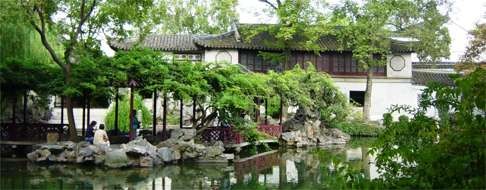
Book review: the most enthralling ‘China book’ you’ll read in a decade, possibly
László Krasznahorkai’s Destruction and Sorrow Beneath the Heavens is an exploration of the state of Chinese culture that is as much about its writer/narrator as the places he finds himself in


by László Krasznahorkai (translated by Ottilie Mulzet)
Seagull Books
4.5/5 stars
Of all the “China books” you may read this year, or next, or possibly the rest of the decade, none is likely to be as confounding, or enthralling, as László Krasznahorkai’s Destruction and Sorrow Beneath the Heavens.
It is on the surface a work of travel literature of the sort one might expect from a writer such as Colin Thubron. Krasznahorkai travels to Shanghai, Beijing, Nanjing, Suzhou, Jiuhuashan, Hangzhou, often by bus, visiting the sites, speaking with locals. Like many other such books, the journeys Krasznahorkai chronicles are as much internal as geographical: this is a voyage of personal, intellectual and philosophical discovery.
Krasznahorkai has an agenda - not politics or economics, but rather an exploration of the current state of Chinese culture - and includes long transcriptions of conversations with people who head up museum, monasteries, libraries and gardens. There are 193 footnotes.
There is a literary sensibility to the writing and Krasznahorkai’s intellect radiates from the pages. He is no simple observer
But as Krasznahorkai himself notes on many occasions, surfaces can deceive. There is a literary sensibility to the writing and Krasznahorkai’s intellect radiates from the pages. He is no simple observer: he intervenes, meddles, berates, insists - and ponders.
And yet, it’s not clear how much of it is true. Some must be but the book is narrated in the present tense by a László Stein, who is clearly, possibly, Krasznahorkai. And considerable attention is paid to drawing Stein’s character: Destruction and Sorrow is as much, perhaps more, novelistically about him as it is about China. The effect is a lack of solidity, not unlike that of the narrator describing his walk and what he sees and doesn’t see in an impenetrable fog in Jiuhuashan.
The nominal purpose of the visit to is to find what if anything remains from the ruin being wrought on classical Chinese culture by the country’s headlong rush to modernity. It helps to know that the book first appeared in in 2004 in Krasznahorkai’s native Hungarian and has only just arrived in English translation; China is changing so quickly that observations must be time-stamped like photos.

Extraordinary sentences ... go on for pages and pages with commas, semi-colons, colons and m-dashes impeding their flow no more than pebbles in a stream
The second is the extraordinary sentences that go on for pages and pages with commas, semi-colons, colons and m-dashes impeding their flow no more than pebbles in a stream: the words just rush over and around them. This is reading as physical exercise: by the time a full-stop arrives, the reader is completely breathless, drained not just by the sentence but also by the thought that someone actually translated this.
Once Stein is finished clubbing the cities and sites he visits, detailing the infinite damage done by the system of reconstruction in New China, the monstrosity of crudely vulgar taste, the implacable lack of understanding and the plethora of ignoble results as well as the general tawdriness, he turns on those nominally in charge of protecting and propagating Chinese culture. These are in turn self-serving, ignorant, dismissive, fatalistic or delusional. Stein is alternatively combative, disillusioned and depressed. He brazenly and stubbornly presses his interlocutors who are too polite to boot him out.
The Chinese, of course, do not need foreigners to tell them how to protect their own culture; Stein receives several such hints. He, for example, needs an interpreter with him, can’t read Chinese and is told that “This is a culture built upon the unconditional primacy of writing.” Stein is somewhat immune to these admonitions; one suspects that Krasznahorkai is not.
Stein ultimately finds what he is looking for where he least expects it: in the tourist-laden gardens of Suzhou (“If someone steps into the spaces of the Zhisheng, the Shizi Lin or the Wangshi Yuan, then he has stepped into the lost traditions of China.”)
The point is made more than once that of all the world’s ancient cultures - Greek, Egyptian - Chinese culture is the one that is still lived; whether it is in fact still living was the point of the book.
Those who consider themselves experts on Chinese culture, or who think that foreigners should refrain from commenting on something so intimate, may possibly find Stein and his often adamant views annoying or irrelevant. Everyone else, however, is likely to find mysteries not unlike those Krasznahorkai apparently discovered in Suzhou.
The Asian Review of Books